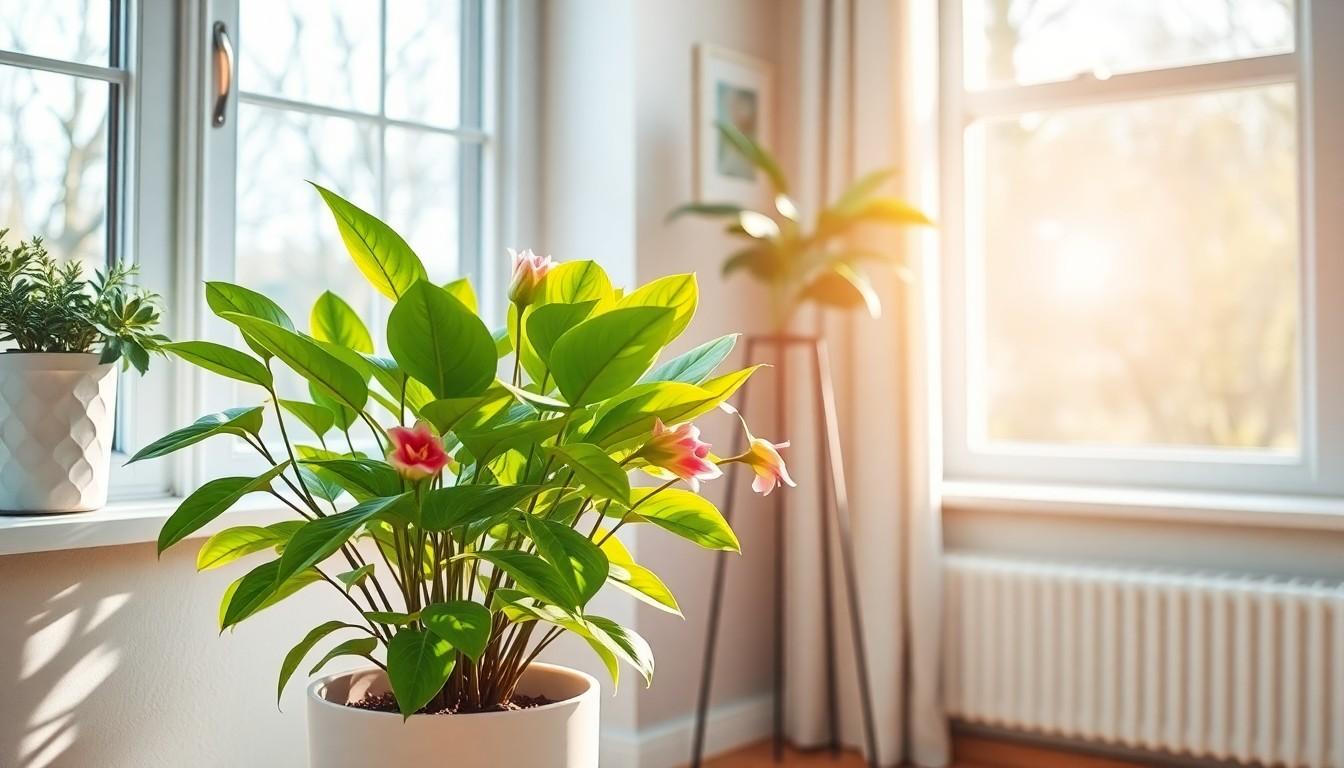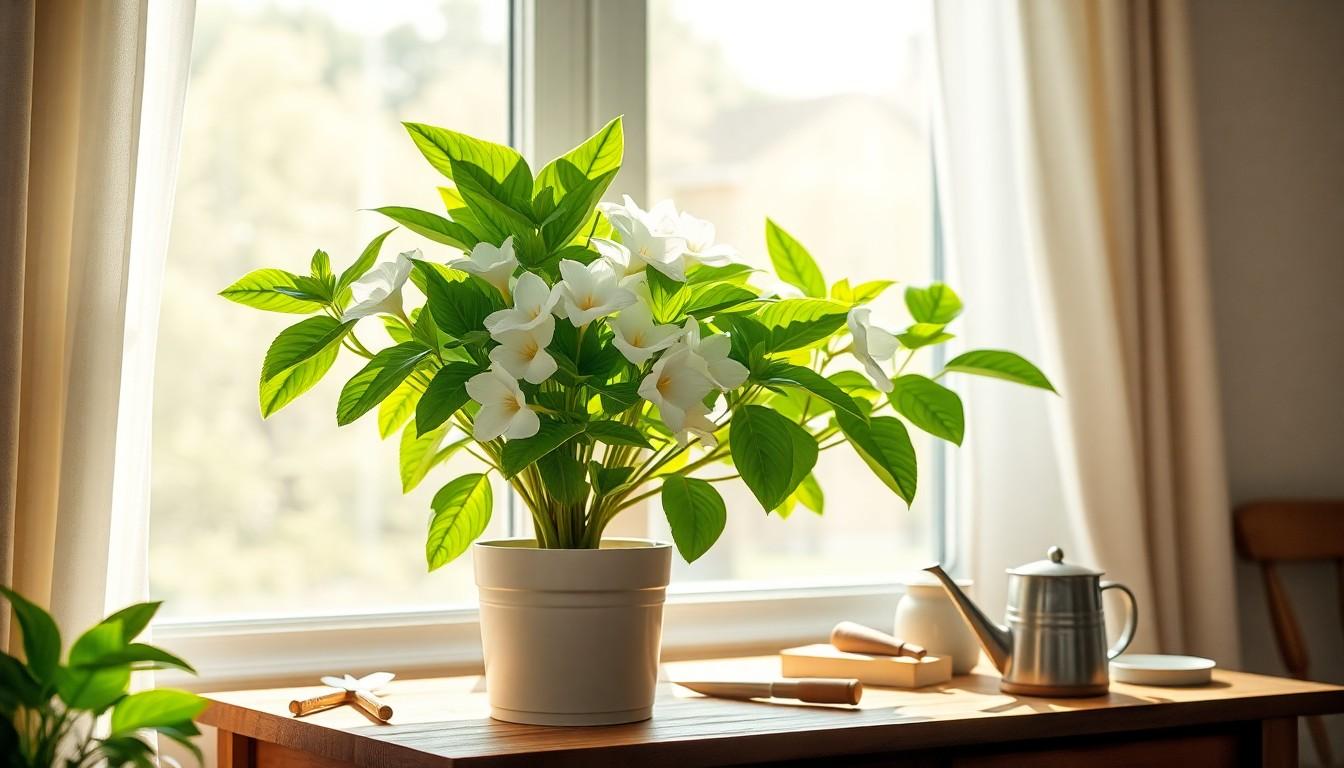If you’re looking to add a touch of tropical elegance to your home, the white bird plant is your go-to green companion. With its striking foliage and vibrant blooms, it’s like having a mini vacation right in your living room. But don’t let its beauty fool you; this plant has specific care needs that can make or break your botanical dreams.
Overview of White Bird Plant
The white bird plant, known for its stunning white blooms and lush green leaves, brings a touch of the tropics into any indoor space. Characterized by its large, paddle-shaped leaves, this plant thrives in bright, indirect light and prefers warm temperatures. Tropical origins contribute to its vibrant appearance, making it a favorite for interior decor.
Watering practices play a crucial role in its care. Maintaining moderately moist soil is essential, as overwatering can lead to root rot. During the growing season, typically from spring to summer, it requires more frequent watering. Fertilizing with a balanced liquid fertilizer every four to six weeks promotes healthy growth.
Humidity levels also significantly impact its well-being. This plant flourishes in high humidity environments, so misting the leaves or placing it near a humidifier can enhance its health. Adjusting the moisture in the air supports its tropical nature and encourages vivid blooms.
Repotting should occur every two to three years or when the roots become crowded. Choosing a pot that is one size larger supplies the space needed for growth. Pruning the white bird plant helps maintain its shape and encourages new growth. Removing dead or yellowing leaves ensures that energy is directed toward healthy parts of the plant.
Pests like spider mites or mealybugs can pose challenges. Monitoring for signs of infestation allows for early intervention, usually involving neem oil or insecticidal soap. Observing the overall condition of the plant regularly aids in providing appropriate care tailored to its specific needs.
Essential Care Requirements

The white bird plant thrives under specific conditions that ensure its health and beauty. Understanding its essential care requirements promotes a lush and vibrant indoor environment.
Light Conditions
Bright, indirect light supports the white bird plant’s growth. More exposure leads to healthier foliage and blooms. It thrives near east-facing windows, where sunlight gently brightens its leaves. Avoid direct sunlight, which can scorch the delicate foliage. Low light conditions hinder growth and may lead to leggy growth patterns. Monitoring light levels ensures the plant receives adequate brightness for optimal development.
Watering Needs
Moderately moist soil keeps the white bird plant happy. During the growing season, watering once a week prevents the soil from drying out completely. Overwatering poses threats like root rot, so allowing the top inch of soil to dry between waterings is crucial. During the winter months, less frequent watering suffices as growth slows. Always check the moisture level before adding water to maintain root health.
Soil Composition
Well-draining potting soil suits the white bird plant’s needs. A mix containing peat moss, perlite, and pine bark promotes aeration and moisture retention. Proper drainage prevents water buildup, which protects the roots from rot. Adjusting soil composition every two to three years during repotting renews nutrients and promotes healthy growth. Such care ensures the plant remains vibrant and lush.
Fertilizing White Bird Plants
Fertilizing white bird plants is crucial for promoting vibrant growth and blooms. Understanding the right types of fertilizers and the ideal schedule enhances their health and appearance.
Types of Fertilizers
Use balanced, water-soluble fertilizers for optimal nutrition. Products with equal parts nitrogen, phosphorus, and potassium foster healthy foliage and blooms. Organic options, such as fish emulsion or seaweed extract, enrich the soil and support growth without harsh chemicals. Slow-release granular fertilizers provide a steady supply of nutrients over time, simplifying care. Always check the product label for specific NPK ratios to ensure it meets the plant’s needs.
Fertilization Schedule
Apply fertilizer every 4 to 6 weeks during the growing season, which typically spans spring to summer. Dilute water-soluble fertilizers to half the recommended strength to prevent potential burn to the roots. In fall and winter, reduce fertilization frequency, as the plant enters a dormant phase. This adjustment allows energy conservation and maintains soil health. Always water the plant lightly before applying fertilizer to enhance absorption and avoid shock.
Common Pests and Diseases
White bird plants can encounter several pests and diseases that affect their health. Regular monitoring helps ensure that infestations are caught early.
Identifying Pests
Common pests include aphids, spider mites, and mealybugs. Aphids appear as small green or black insects, often clustering on new growth. Spider mites create fine webbing on leaves and may cause yellowing or stippling. Mealybugs look like white cottony masses on stems and leaf bases. Carefully observing the plant’s undersides and leaf joints reveals the presence of these pests. Signs of distress, such as wilting or browning, may indicate a pest issue. Prompt identification allows for timely intervention.
Treatment Options
For treatment, organic solutions like neem oil offer effective results. Neem oil disrupts the life cycle of pests without harming the plant. Insecticidal soap also serves as a safe option, suffocating insects upon contact. Applying treatments every 7 to 14 days targets infestations effectively. Additionally, maintaining optimal humidity levels discourages spider mites. Regularly cleaning and inspecting leaves aids in early detection. Effective treatment involves following instructions on product labels and monitoring for new pest activity.
Conclusion
Caring for a white bird plant can transform any space into a tropical oasis. With the right attention to light, water, and humidity, its stunning foliage and blooms can thrive beautifully indoors. Regular maintenance like repotting and pruning ensures the plant remains healthy and vibrant.
By staying vigilant against pests and providing the necessary nutrients, plant owners can enjoy the visual appeal of this striking species for years to come. Embracing these care tips will not only enhance the plant’s beauty but also contribute to a flourishing indoor garden.

